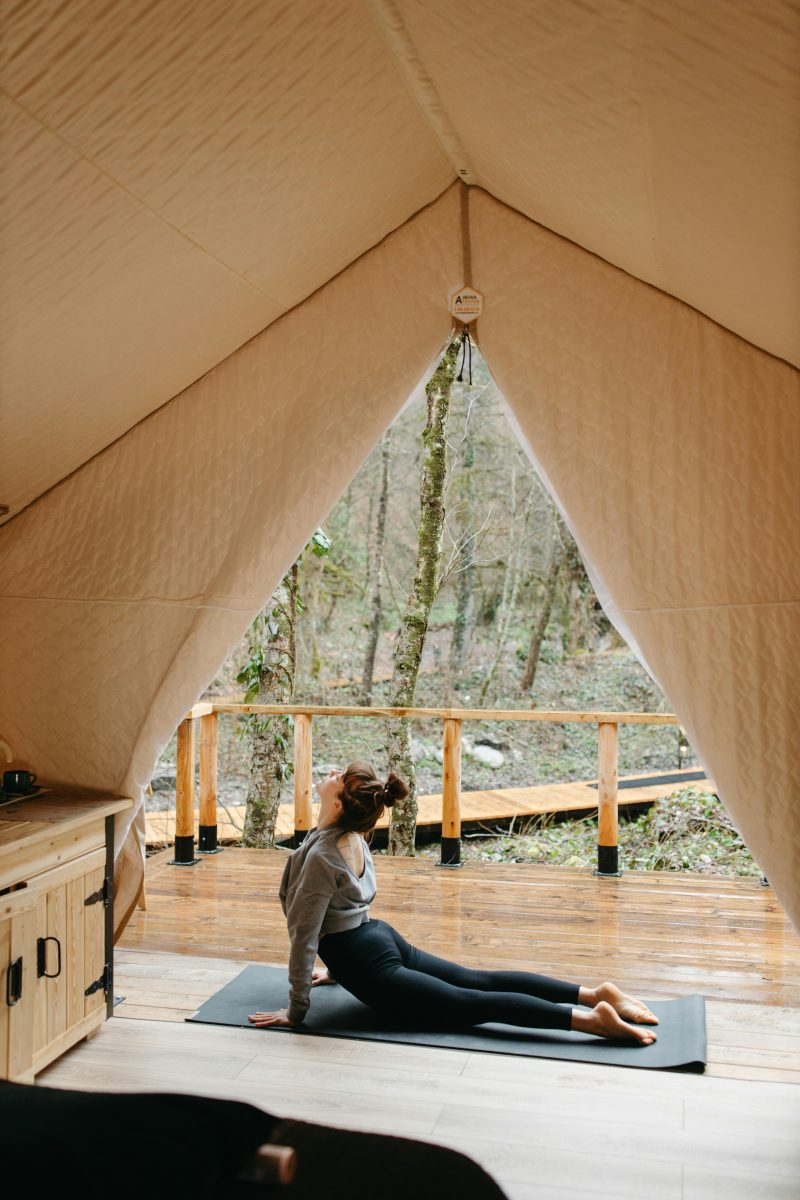Last Updated on: 14th July 2024, 09:31 am
Introduction to Outdoor Fitness Activities and Their Rising Popularity

Outdoor fitness activities, ranging from serene yoga sessions in the park to exhilarating mountain biking trails, offer a refreshing alternative to the confines of indoor gyms. These activities not only rejuvenate the body but also the mind, with the added benefit of connecting with nature. The surge in their popularity can be attributed to a growing awareness of health and wellness, coupled with the desire for novel, socially engaging experiences. People are increasingly drawn to the holistic benefits of exercising in natural settings, which provide a scenic backdrop to any workout routine.
- Environmental Impact: As more individuals take to parks, beaches, and trails, the potential for ecological disturbance increases. It’s crucial to strike a balance between fostering a healthy lifestyle and preserving the natural beauty that makes these activities so appealing.
- Responsible Practices: By promoting responsible practices among outdoor fitness communities, we can ensure that these spaces remain vibrant and accessible for generations to come.
The Footprint of Foot Traffic: Erosion and Trail Degradation

The allure of the great outdoors beckons many to lace up their hiking boots and embark on adventures through nature’s pathways. Yet, this increasing foot traffic leaves an indelible mark on the very landscapes we cherish. Soil compaction and vegetation loss are immediate consequences, altering the natural habitat and disrupting the ecosystem’s balance.
- Case Studies: Popular hiking trails and natural parks, such as Yosemite’s iconic paths and the Appalachian Trail, serve as examples of the balance between accessibility and preservation.
- Long-term Consequences: Water runoff patterns shift, leading to increased erosion and the loss of native plant species. This not only affects the aesthetic and ecological value of these areas but also diminishes their resilience to climate change.
- Collective Effort: By adhering to designated trails, practicing Leave No Trace principles, and supporting conservation initiatives, we can help preserve the integrity of these natural wonders.
The beauty of nature and the thrill of exploration should not come at the cost of environmental degradation. As we venture into the wild, let us tread lightly, respecting the trails that connect us to the earth and to each other. Together, we can safeguard the natural heritage that inspires our outdoor fitness pursuits.
Pollution and Waste: The Unseen Trail Companions

Outdoor fitness activities, while rejuvenating for the body and mind, often leave behind an invisible trail of pollution and waste. The types of pollution generated span from the physical—such as discarded water bottles and energy bar wrappers—to the chemical, including sunscreen and insect repellent that wash off into waterways. This blend of littering and non-biodegradable waste poses a significant threat to our natural landscapes and the wildlife that inhabit them.
- Minimizing Waste: Adopting a ‘pack in, pack out’ mentality ensures that everything brought into nature leaves with you. Opting for reusable water bottles, containers, and utensils cuts down on single-use plastics.
- Biodegradable Products: Choosing biodegradable products for sun protection and insect repellent minimizes chemical pollution.
- Community Responsibility: Participating in or organizing clean-up events helps to mitigate the impact of littering, fostering a sense of community responsibility towards our shared natural spaces.
By implementing these strategies, we can significantly reduce our environmental footprint. The great outdoors offers us a sanctuary for physical and mental rejuvenation; it’s our duty to protect and preserve it. Let’s commit to being conscientious stewards of the environment, ensuring that the trails we love remain vibrant and unspoiled for generations to come.
Water Bodies and Outdoor Fitness: A Delicate Balance

The interplay between outdoor fitness activities and the health of our water bodies is a complex one. Lakes, rivers, and oceans, vital for their biodiversity, face challenges from the very activities meant to celebrate their beauty. The impact of outdoor fitness, particularly water sports, on these ecosystems is multifaceted, requiring a nuanced understanding and responsible action.
- Chemical Pollution: Chemical pollution emerges as a significant concern, with sunscreens and insect repellents shedding light on the unintended consequences of our efforts to protect ourselves.
- Disrupting Ecosystems: The role of water sports in disrupting aquatic ecosystems cannot be overstated. Activities such as jet skiing and motorboating, while exhilarating, generate noise and waves that disturb the natural behavior of aquatic animals.
- Sustainable Practices: Opting for eco-friendly sunscreens and repellents, respecting no-wake zones, and choosing non-motorized watercraft are steps in the right direction.
As we navigate the waters of outdoor fitness, let us remember the delicate balance that exists between our activities and the aquatic ecosystems. Through informed choices and responsible behaviors, we can protect these vital resources, ensuring they remain vibrant and thriving for future generations. The path to harmony with nature is paved with respect, care, and a deep appreciation for the interconnectedness of all living things.
Wildlife Disturbance: The Unintended Consequence

The tranquility of natural habitats is increasingly pierced by the sound of human activity. Our presence, often accompanied by noise pollution, casts a long shadow over wildlife, altering behaviors and threatening the survival of sensitive species. The ripple effect of our footprints and voices extends far beyond the immediate surroundings, disrupting the delicate balance of ecosystems.
Species such as the spotted owl and the mountain caribou are particularly vulnerable. These creatures rely on the quietude of their environment for hunting and breeding, making them sensitive indicators of ecological health. The intrusion of human noise and activity can lead to decreased reproductive success and altered feeding behaviors, pushing them further towards the brink of extinction.
However, hope is not lost. Mitigating wildlife disruption begins with awareness and action. When venturing into the great outdoors, stick to established trails to minimize habitat fragmentation. Keep noise to a minimum, respecting the acoustic space of wildlife. Opt for non-intrusive activities that blend into the natural soundscape, such as hiking or bird watching, over those that generate excessive noise. Lastly, participate in or support conservation efforts that aim to protect and restore natural habitats.
By adopting these practices, we can enjoy the rejuvenating power of nature without compromising the well-being of its inhabitants. It’s a testament to our ability to coexist with the natural world, ensuring that the symphony of life continues unabated. Let us tread lightly and listen closely, embracing the role of stewards in preserving the harmony of ecosystems for generations to come.
Sustainable Practices in Outdoor Fitness

Embracing outdoor fitness activities comes with a responsibility to protect the environments we cherish. Sustainable practices are the cornerstone of this ethos, ensuring that our pursuit of health and vitality contributes positively to the natural world.
- Leave No Trace principles are fundamental to this approach. They guide us to minimize our impact, from planning ahead and preparing to disposing of waste properly. When we apply these principles, we not only preserve the landscapes but also enhance our connection to the earth.
- Choosing eco-friendly gear is another critical step. Opt for equipment made from recycled materials or sustainable sources. This not only reduces waste but also supports a market for green products. From biodegradable yoga mats to solar-powered fitness watches, every choice makes a difference.
- Participating in eco-conscious fitness events can amplify our individual efforts. These events, often organized with environmental stewardship in mind, foster community and raise awareness. Whether it’s a beach clean-up run or a conservation-focused hiking group, joining forces with like-minded individuals can lead to significant positive change.
By integrating these sustainable practices into our outdoor fitness routines, we ensure that the natural spaces we enjoy remain vibrant and intact. It’s a commitment to the future, a promise to the planet that our health and the earth’s well-being can thrive together.
In Closing
Outdoor fitness harmonizes health and nature. This balance fosters both personal and environmental well-being. By embracing sustainable practices, we deepen our connection to the earth, navigating the delicate interplay between nurturing our bodies and preserving natural landscapes. Reflecting on the importance of minimal impact, eco-conscious choices, and community action underscores our role in safeguarding the planet. Let us move forward with a commitment to tread lightly and inspire others, ensuring the enduring vibrancy of our shared natural spaces.
Environmental Impacts of Outdoor Fitness Activities FAQs
Environmental concerns associated with the use of synthetic materials in outdoor fitness clothing and equipment include pollution and long-term waste management challenges. These materials often derive from petroleum and can release harmful microplastics into waterways during washing or as they degrade in nature. The production and disposal of synthetic fitness gear thus contribute to the accumulation of plastic pollution in ecosystems.
Yes, the use of outdoor fitness equipment in parks can have environmental benefits by promoting low-impact physical activities that require minimal resource consumption. These installations encourage people to engage in exercise that doesn’t rely on electricity or produce emissions, unlike traditional gym equipment. Furthermore, they can increase public awareness about staying active in harmony with the natural environment, fostering a culture of sustainability.
Yes, outdoor fitness activities can contribute to soil erosion, especially in areas with loose or vulnerable soil compositions. Activities such as trail running and mountain biking can disturb the soil surface, leading to increased erosion rates. This is particularly significant in wet conditions or on steep slopes where the soil is more susceptible to being washed or worn away.
Night-time outdoor fitness activities can disrupt nocturnal wildlife by introducing artificial light and human presence into their natural habitats during their active hours. This can alter animals’ natural behaviors, such as feeding and mating patterns, and lead to increased stress or disorientation. Minimizing light pollution and limiting activities to less sensitive times can help reduce these impacts.
Outdoor fitness events can have a significant impact on local wildlife by disrupting natural habitats and behavior patterns. The presence of humans and the noise they generate can cause stress to animals, leading them to abandon their habitats or alter their feeding and breeding behaviors. Large events may also lead to temporary or permanent changes in wildlife movement and habitat use due to the increased human activity and infrastructure development.
Outdoor group fitness activities generally have a minimal direct impact on air quality compared to indoor activities, as they do not involve the use of energy-consuming equipment. However, if these activities lead to increased vehicular traffic to the area, they can indirectly contribute to air pollution. Encouraging participants to use sustainable transportation options can help mitigate this impact.
Littering during outdoor fitness activities significantly harms the environment by introducing pollutants and non-biodegradable materials into natural settings. This not only detracts from the aesthetic value of landscapes but also poses threats to wildlife, which may ingest or become entangled in litter. Efforts to minimize waste and promote responsible disposal practices are crucial in mitigating these impacts.
Constructing outdoor fitness areas on green spaces can lead to habitat fragmentation and loss of biodiversity if not carefully planned and managed. The introduction of non-native materials and the physical alteration of landscapes can disrupt local ecosystems. However, with thoughtful design that minimizes environmental footprint, these areas can be integrated into green spaces in a way that balances human activity with ecological preservation.
To minimize the environmental impact of outdoor fitness activities, participants and organizers can adopt practices such as sticking to established trails, carrying out all litter, and using eco-friendly equipment and materials. Educating participants about the importance of leaving no trace and promoting sustainable transportation options to and from activity sites can further reduce ecological footprints. Additionally, planning activities outside of sensitive wildlife breeding seasons can help protect local fauna.
Water usage in outdoor fitness activities, such as obstacle courses or events requiring water stations, can have environmental impacts if not managed sustainably. Excessive water use can strain local water resources, especially in arid regions or during drought conditions. Implementing water conservation measures and using recycled water when possible can help minimize these effects.
Orlando is a all round athlete from Australia, now resident in Germany. His sports of passion of American Football(Offensive line), weight training and indoor rock climbing where he uses his 195cm wing span to his advantage.



